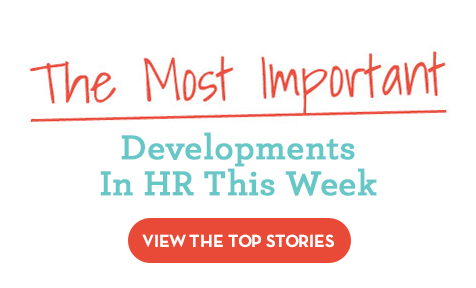
Every one of us has been affected by mass shootings, whether it’s the shock and grief of knowing one of the victims or the wrenching sadness of watching report after report on the news. Many have been targeted — children at school, country music fans at a concert, people at a nightclub or a movie … the list goes on. This time, HR was the target. Five people were killed this week when a man who was being let go from his job opened fire at the Henry Pratt Company in a Chicago suburb, including HR manager Clayton Parks and 21-year-old HR intern Trevor Wehner. It was the first day on the job for Wehner, who majored in HR management and was no doubt looking forward to a long career as a part of our HR community. CNN


For the first time ever, Hilton is riding high on top of Fortune’s 100 Best Companies to Work For list. The list is compiled by people analytics firm Great Place to Work, which determines the ranking based on extensive employee surveys. The reasons Hilton found itself in the top spot on this prestigious list revolve around HR and people issues, specifically how Hilton treats “line-level” employees, like kitchen and cleaning staff. It’s all part of an effort by CEO Chris Nassetta, who took the reins in 2007 and found the company was disconnected from those workers. He changed that, adopting an employee-first attitude. The simple act of him trying on a housekeeper’s uniform and realizing how heavy it was led to a partnership with Under Armour to design more comfortable uniforms. They also launched a renovation to upgrade “back-of-the-house” areas used by staff to make them as nice as guest areas, including massage chairs, a free cafeteria, the whole nine yards. Another effort: a free program for employees to earn their GED. Nassetta says he’s “obsessed” with taking care of his employees. How many CEOs can say that? Investors are no doubt happy about the changes. Hilton’s stock is up 274 percent from its IPO price in 2013. Fortune


Well, the stats about HR in Namely’s 2018 Workplace Diversity Report are downright cringe-worthy. Two words: white and women. Women make up 67 percent of the HR workforce, and 65 percent of the total HR landscape is white. What the what? Everything we know about diversity — how it contributes to excellence and innovation and creativity — has been part of hiring strategies for a while now. How did HR’s own hiring miss this boat? And it gets worse. Women HR managers earn an average of $91,981 per year, while men make $103,644. Come on now. HR has been doing companywide audits of pay equity after U.K. businesses were required (shamed) to post their pay equity gaps publicly last year. It seems that we’re so busy looking after everyone else’s rights in the workplace, we’re forgetting to look after ourselves. Namely


Align HR with a company’s strategic goals much? This case study released by MIT this week shows how it’s done. It’s about how IBM was in the midst of a huge business transformation and the CHRO realized HR was a sticking point. Big Blue found itself disrupted by new technology, AI, and hybrid cloud services, and was pivoting in response. New, agile ways of working together and new workforce skills were on the docket, but CHRO Diane Gherson realized that IBM’s approach to performance management, which she knew employees neither supported nor trusted, would need to be entirely reimagined before the organization could get its people to hop on board with the new normal. Others in the C-suite thought IBM’s approach to PM was working just fine, thank you. It took Gherson more than a year to convince them their efforts at digital transformation would fail without higher levels of employee engagement, and that meant scrapping that PM system. Read the full article for how it all shook out. MIT Sloan Management Review


With all of the brouhaha about the wall and the Mueller report, you might have missed that a bipartisan bill to amend the Age Discrimination in Employment Act was re-introduced into the Senate this week. The bill is designed to reduce the burden on employees alleging age discrimination. It’s in response to a Supreme Court ruling on a case in which a plaintiff’s suit was thrown out because age was not the only factor in an adverse employment action. Politicalspeak aside, here’s the skinny: That Supreme Court ruling made it more difficult for employees to sue for age discrimination than for employees to sue for discrimination on the basis of gender, race, national origin, or religion. This new bill aims to level that playing field. Sen. Chuck Grassley










